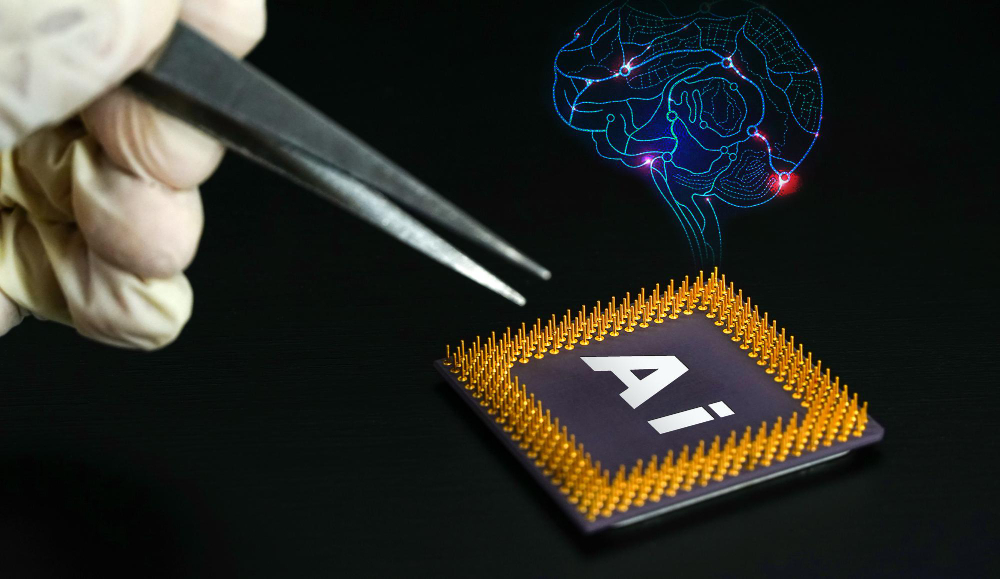
Mythic, an AI chip startup, has closed a $13 million funding round led by existing investors Atreides Management, DCVC, and Lux Capital, as well as new investors Catapult Ventures and Hermann Hauser Investment. The funding will help Mythic bring its “next generation” product, an improved, energy-efficient AI processor, to market. Co-founded by University of Michigan’s Dave Fick and Mike Henry, Mythic’s chip technology stores analog values in flash transistors, allowing computations to be performed in parallel without stopping. Mythic has doubled down on computer vision use cases and can detect small objects from a distance in less than 33 milliseconds. Mythic’s new CEO, Dave Fick, has refocused the company on defense and public safety, among other verticals, and is leveraging more development partners and off-the-shelf components to reduce costs and speed up time to market.
Mythic an AI chip startup founded last November reportedly It ran out of capital and today rose from the ashes with an unexpected injection of new funds.
Mythic announced this morning that it has closed a $13 million funding round led by existing investors Atreides Management, DCVC and Lux Capital, and new investors Catapult Ventures and Hermann Hauser Investment. The tranche is a fraction of the startup’s previous funding ($70 million), but Mythic hopes that the tranche will help them bring their “next generation” product (an improved, energy-efficient AI processor) to market. claims to be
“Despite the challenging economic conditions right now, this new funding will help Mythic focus on its technology offering, go-to-market strategy and customer acquisition,” said Dave, Mythic’s newly appointed CEO. Fick told TechCrunch in an email interview.
Co-founded by University of Michigan’s Fick and Mike Henry under the name Isocline, Mythic has developed a chip technology that stores analog values in flash transistors. While the digital processor is “paused” to exchange data to and from dedicated memory, Mythic’s hardware can perform computations in parallel without stopping, boosting performance and efficiency, especially for AI applications. improve. At least the company claims so.
Mythic initially worked on projects for the United States Air Force through the Small Business Innovation Research (SBIR) program focused on computer vision and GPS signal acquisition for high-altitude drones. Once the deal was completed, the startup decided to pursue the venture capital route, raising over $170 million in multiple rounds from investors including Hewlett Packard Enterprise and BlackRock.
Using its first commercial chip, the M1076, Mythic has doubled down on computer vision use cases, building a system that can detect small objects from a distance in less than 33 milliseconds. These features are probably what attracted Mythic’s biggest customer to date, Lockheed Martin, whose corporate arm, Lockheed Martin Ventures, has become a major investor in the startup.
So what went wrong? Well, Mythic was competing in a very crowded field: dozens of startups were and still are developing chips to efficiently run AI at the edge. striped eye, accelera, flex logics, new reality, deposit, Hello and NeronBut the funds are drying up. according to Global VC equity in semiconductor startups fell 46% to $7.8 billion in 2022, according to The Register. This reflects increased scrutiny of capital-intensive companies.
Mythic isn’t the only one affected by Bast.Last year, AI chip makers graphcoreValuation reportedly slashed by $1 billion after deal with Microsoft failed Habana Labs, an AI chip company it owns, laid off an estimated 10% of its workforce.
To restore stability, Fick was promoted from CTO of Mythic to CEO after Henry. wash The CEO left to pursue other interests — efficiency first. For example, Mythic now leverages more development partners and off-the-shelf components than before, reducing costs and (with any luck) speeding up time to market.
Fick claims the added benefit is that Mythic’s R&D will be “more agile” for the release of its next-generation chip, the M2000.
“Given the new macroeconomic environment, many start-ups will want to take a similar approach, especially systems companies that need to offer many components beyond their core technology,” says Fick. added Mr. “But the advantage of Mythic’s analog computing approach is that it allows us to use more mature process nodes.
Beyond cutting costs, Fick said, Mythic has revamped its go-to-market strategy and returned to its roots with a “renewed focus” on defense (and, to a lesser extent, public safety, industrial , and consumer verticals). He didn’t elaborate. But perhaps that means getting more government-contracted customers like Lockheed.
“Cloud computing is often not available on the battlefield, creating a rigid edge computing environment. Advanced computer vision includes large and small drones, land-based autonomous systems, radar, augmented reality headsets, and more. It’s been applied to a lot of places,” Fick said. “The M2000 reduces size, weight, power and cost to deploy high-performance computer vision, so these technologies can be applied to more applications.”
Critics may deride Mythic’s turn to defense as opportunistic, but there’s no denying there’s a source of capital there. As PitchBook recently pointed out reportafter years of avoiding investing in military- and security-related tech startups, VCs are turning their attention in this area as the US seeks to gain the upper hand against threats from adversaries including China and Russia. In 2022, $7 billion will be invested in VC-backed U.S. aerospace and defense companies by October 13, and the sector will hit a record $7.6 billion in deals in 2021. It is on track to beat the dollar.
In apocalyptic terms, DCVC Managing Partner Matt Ocko said: Violence and terror and allied armies on the battlefield. Mythic’s technology bridges the gap between what AI researchers have announced and what system manufacturers have actually deployed, delivering innovative capabilities for homeland defense and national security. ”
Analyzing the hype, investors are enthusiastic about the direction of Mythic’s new defensive forward – at least for now. Time will tell if it was right.
Source: WebCache


Leave a Reply